- Home
- John Updike
Higher Gossip Page 34
Higher Gossip Read online
Page 34
Even from the depths of Hell His voice I hear
Within the unfathom’d caverns of my Ear.
Therefore I print: nor vain my types shall be.
The best known of his books, of course, are the Songs, of innocence and of experience. It is instructive to see them in the paper, so to speak, tiny and demurely colored—pretty chapbooks meant to be slipped into jacket pockets, in the same decade when Wordsworth, in his and Coleridge’s Lyrical Ballads (1798), was asking “how far the language of conversation in the middle and lower classes of society is adapted to the purposes of poetic pleasure.” Some of the poems seem banal, pseudo-Christian doggerel and others are so laconically profound as to need the twentieth century to appreciate them:
O Rose, thou art sick.
The invisible worm
That flies in the night,
In the howling storm,
Has found out thy bed
Of crimson joy,
And his dark secret love
Does thy life destroy.
It would take Nietzsche and Freud to explicate those fatal maneuvers on the bed of crimson joy, and Marx to explain how (to quote Blake’s “London”) “every cry of every Man” testifies to “mind-forg’d manacles,” and how (from “The Chimney-Sweeper”) “God & his Priest & King … make up a heaven of our misery.” Blake’s anti-repressive wisdom descends to us not in his long, long-lined allegorical epics but in isolated couplets—
If the Sun and Moon should doubt,
They’d immediately go out.
A dog starv’d at his master’s gate
Predicts the ruin of the State.
The harlot’s cry from street to street
Shall weave Old England’s winding sheet.
The Vision of Christ that thou dost see
Is my vision’s greatest enemy—
and quatrains—
Abstinence sows sand all over
The ruddy limbs and flaming hair,
But Desire gratified
Plants fruits of life and beauty there.
There is a smile of love,
And there is a smile of deceit,
And there is a smile of smiles
In which these two smiles meet.
What is it men in women do require?
The lineaments of gratified Desire.
What is it women do in men require?
The lineaments of gratified Desire—
and in his marvellous one-liners: Milton “was a true poet and of the Devil’s party without knowing it”; “Eternity is in love with the productions of time”; “One Law for the Lion & Ox is Oppression”; “The tygers of wrath are wiser than the horses of instruction”; “To generalize is to be an idiot”; “He who would do good to another must do it in minute particulars”; and, of Sir Joshua Reynolds, “This Man was Hired to Depress Art.”
But was Blake sane? His fiery wit, reckless as a prophet’s rage, was not for all hands to warm themselves by. Toward the end of his obscure, drudging life he began to attract attention from younger men, who recorded varying impressions of his conversation. Samuel Palmer, the painter, remembered Blake as “anything but sectarian or exclusive, finding sources of delight throughout the whole range of art; while, as a critic, he was judicious and discriminating.” Whereas Henry Crabb Robinson in his diary spoke of “the wild & strange, strange rhapsodies uttered by this insane man of genius” and complained that, since there was “really no system or connection in his mind at all, his future conversation will be but varieties of wildness and incongruity.” His wife, the docile Catherine, whom he taught to read and write and make prints, famously confided to a friend, “I have very little of Mr Blake’s company; he is always in Paradise.” When Blake was four, he saw God put his head to the window; six or so years later, walking on Peckham Rye, he saw “a tree filled with angels,” and, on another boyhood occasion, saw angels striding amid haymakers.1 Crabb Robinson in his 1825 diary recorded that Blake declared the earth is flat and “denied that the natural world is any thing. It is all nothing and Satan’s empire is the empire of nothing.” He claimed to talk to Milton, Shakespeare, and Voltaire, the last in a language that was “probably French, but to my ear it became English.” More pertinently to his visual art, he told another acolyte in his last years, “I can look at a knot in a piece of wood till I am frightened at it.” Van Gogh might have recognized the sensation.
The classic doctrine of inspiration made every artist insane, or at least out of his head, at the creative peak. Blake described himself as an “enthusiast,” a word that means literally possessed by a god and was applied to all those Protestant sectarians, like the German Anabaptists, who sought religious satisfaction in personal experience, outside the established churches. He confessed, in a letter written at the age of forty-two, “I begin to Emerge from a Deep pit of Melancholy, Melancholy without any real reason for it, a Disease which God keep you from & all good men.” On such evidence some modern psychologists venture a diagnosis of bipolar disorder; that is, Blake, like a number of twentieth-century artists, was a manic depressive. The terms feel a touch pat and contemporary; styles change not only in treatments but in maladies. Blake’s delusions were by and large fruitful for him. His long life demonstrates plenty of coherence and concentration, as he painstakingly applied learned engraving skills and carried out a succession of extended projects. Yet his artistic achievement does seem to occupy a plane different from that of, say, Dürer or Cézanne or—another worker at grandiose and interrupted projects—Michelangelo. We understand, we feel, what they were getting at. Even Blake’s friend Henry Fuseli was fantastic in a more calculated and hence intelligible (and less interesting) way. There is, as we tread through the dim lower galleries of the Lehman Wing, something unsteady underfoot, something slippery, which makes the exhibition hard to organize in retrospect, though certain images of uncanny vividness and unabashed loveliness continue to glow in the mind.
Innerlichkeit and Eigentümlichkeit
THE ROMANTIC VISION OF CASPAR DAVID FRIEDRICH: Paintings and Drawings from the U.S.S.R., at the Metropolitan Museum of Art, New York, January 23–March 31, 1991.
The melting of the Cold War, whose immediate global result seems to be the release of fresh energies of strife and destruction, has effected some benefits in the world of art, such as the Metropolitan Museum’s present show of nine oil paintings and eleven works on paper by the German artist Caspar David Friedrich (1774–1840), on loan from the State Hermitage Museum in Leningrad and the Pushkin State Museum of Fine Arts in Moscow. The pictures were purchased over a period of twenty years beginning when the future Tsar Nicholas I, then the Grand Duke Nikolai Pavlovich, visited Friedrich’s studio in Dresden. The visit was made at the urging of the grand duke’s
wife, Alexandra Fedorovna, daughter of Prussia’s King Friedrich Wilhelm III, and his subsequent patronage was carried on through the intermediary offices of the poet Vasily Andreyevich Zhukovsky, Alexandra Fedorovna’s tutor in Russian and an enthusiastic admirer of the painter Friedrich. Zhukovsky frequently visited Dresden, and at each visit sent back to the imperial family descriptions and recommendations which resulted in purchases, the last of them from Friedrich’s impoverished widow in 1841. The works thus accumulated—an indeterminate number, but considerably more than eventually descended to the care of the Soviet state—constitute the only major collection of Friedrich’s work outside Germany. In all of the United States there is but one painting, and that one hides in Fort Worth, Texas, at the Kimbell Art Museum. The art merchants who sold to the great American collectors in the era before World War I focused on the Italians and French, and after 1914 geopolitical factors helped dampen appreciation of German art. Even German appreciation of Friedrich’s mystical, parochial, subtle, and stubborn talent—which for a time attracted approval from Goethe and patronage from the Weimar court—waned after 1820. By 1890, he was virtually forgotten. A retrospective exhibition in Berlin in 1906 of a hundred years of German paintings revived interest, and elicited comparisons of his treatment of light to that of the Impressionists. But he was a thoroughly Nordic artist—he attended art school in Copenhagen and never travelled to Italy, and even balked at visiting Switzerland. He was a fierce anti-Napoleon patriot, who dressed his figures in an altdeutsch attire symbolic of the heroic medieval era of German unity. This nationalism won Nazi hearts; in 1940, a German critic dated Friedrich’s resurgence from 1933 and boasted that “the pinnacle of his influence coincides with the outbreak of World War.” Air raids on Berlin destroyed a number of his paintings there in 1945. In the post-war era, Friedrich has arrived as the internationally best-known German painter of the nineteenth century.
The selection on view at the Metropolitan, though it ranges over nearly the full extent of his career and is supplemented by six early (c. 1803) woodcuts from the Met’s own collection, cannot approach complete representation; this is a mega-artist but a mini-show. Volumes like Joseph Leo Koerner’s Caspar David Friedrich and the Subject of Landscape (Yale University Press, 1990) and Helmut Börsch-Supan’s Caspar David Friedrich (Braziller, 1974; second edition, Prestel, 1990) reproduce masterpieces—The Large Enclosure Near Dresden (c. 1832), Early Snow (c. 1828), Evening (1824), Arctic Shipwreck (1824), Chalk Cliffs on Rügen (1818–19), Neubrandenburg (c. 1817), and the notorious Tetschen Altarpiece (1808)—without parallel in the score of works on loan from the Russians. On the other hand, Friedrich was consistent in his themes and style—so consistent that one sepia work at the Metropolitan, Window with a View of a Park, is dated “c. 1806–11 or 1835–37”—and among the paintings on display in New York are Friedrich’s two largest surviving canvases, the complementary Moonrise by the Sea (1821) and Morning in the Mountains (1822–23), and two of his most frequently reproduced, Swans in the Reeds by Dawn’s Early Light (1832) and On the Sailboat (1818–19). The show affords only a taste, but a fair taste, of the artist, and a curious penetrating taste it is.
Friedrich’s name is reflexively linked to Romanticism; the very title of the show, and of the pleasant and relatively slim catalogue edited by Sabine Rewald, is The Romantic Vision of Caspar David Friedrich. Yet Romanticism is so large and moot a topic it threatens to lead us astray, into philosophical and historical considerations far from the question of why the paintings on the wall win and hold our interest a century and a half after their execution. Friedrich spoke little in interpretation of his own paintings, and then in rather strict terms of Christian allegory. Nor was painting Romanticism’s chosen arena. The movement, if it is not too large and inevitable a cultural tide to be called that, had different father figures in different countries—Rousseau in France, Kant in Germany, Wordsworth in England—and none of them painters. Goethe and Schlegel first used the term in distinguishing the contemporary writing from “classic” writing, and the term derives from the late-Latin romanice loqui—meaning the vulgar Latin vernacular as opposed to book Latin. The expression gradually extended to popular “romances” and to anything with a coloring of the irrational and the passionate. The label scarcely sticks to painting. The Oxford Companion to Art states, in its article on the subject:
Looking back from our vantage point of more than a hundred years we can see that in fact Romanticism never was part of the mainstream of development in the visual arts. Its proper sphere seems to have been a literary one and with perhaps two exceptions it never produced a distinguished artist. One of these … is Delacroix, though his distinction lies not so much in his having been a Romantic as in his having managed to surmount this fact. The other is Turner.
And then of course there is Géricault, and Constable in a sense, and Blake and Bewick you could say, and, oh yes, Fuseli perhaps, and—who was that?—Chassériau! For the purposes of reacting to Friedrich’s paintings, and for guessing at his intentions, it is perhaps enough to have in mind T. E. Hulme’s famous epigram that Romanticism is “spilt religion” and Hegel’s epochal announcement, “The world of Inwardness (Innerlichkeit) celebrates its triumph over the outer world.”
The advance of inwardness in Germany dates back at least to Martin Luther; his anti-institutional bias, once the Lutheran Church became itself an institution, passed to the Moravian Brethren and other pietistic sects that preached a religion of inner spirit and minimal outward trappings. Luther himself had stated, as Joseph Leo Koerner points out, that “it would be better to uproot all the churches and monasteries of the world and burn them to dust.” Friedrich was born in what was then the Swedish province of Pomerania, into a soap boiler’s household of conventional Protestant piety. Through his first art teacher, his fellow-townsman Johann Gottfried Quistorp, he encountered the pantheist philosopher and historian Thomas Thorild, and the poet, pastor, and theologian Gotthard Ludwig Kosegarten, who, Koerner says, “preached a particular theology of the heart, in which the subjective experience of nature’s primal, and therefore divinely created, beauty leads to a direct experience of God.” Kosegarten sometimes preached outdoors, by the sea, in Uferpredigten (“Shore-sermons”); the Baltic’s rocky shores frequently appear in Friedrich’s paintings, thrice in this small show, with the large Moonrise by the Sea and the two sepia works Two Men by the Sea at Moonrise (c. 1835–37) and Boat on the Beach by Moonlight (c. 1837–39). The mood, furthermore, of shoreline silence, of expectancy directed toward a distant horizon, of a barren yet pregnant vastness, pervades his landscapes. Religion has spilt into nature. Philipp Otto Runge, Friedrich’s contemporary, a less suggestive but more articulate painter, wrote of art reaching peaks at the junctures where the Greek gods and then the Catholic God were dying, and claimed that
with us too something again is dying; we stand on the brink of all the religions that originated with Catholicism; the abstractions are fading away; everything becomes more airy and lighter than before; everything draws towards landscape, seeks something definite in this indeterminacy, and does not know where to begin.
Friedrich, Two Men by the Sea at Moonrise, c. 1835–37. Pencil and sepia. (Photo Credit Ill.9)
For literal-minded Friedrich, Nature is a church not only in its numinous content but in its balanced form. His pictorial approach is strikingly frontal and symmetrical. The moon hangs in his pictures like a perfectly round rose window; in Two Men by the Sea at Moonrise it rests precisely on the horizon. The ecclesiastical ruins plentiful in the landscape offered the very image of a burst church from which religion has spilt. The Gothic arches of The Dreamer (c. 1835) hold, instead of a stained-glass biblical scene, fir trees and a dying yellowish light. Friedrich’s depiction of linear elements—tree branches and trunks, the ropes of ship rigging—are, at the opposite pole from Impressionism, as rigorously, faithfully articulated as the vertical lines of a cathedral. In On the Sailboat, the mast stays and the lines edging the
sails turn the boat’s movement as much upward, into the sky, as forward toward the misty small city with its steeples. In Morning in the Mountains, Robert Rosenblum points out in his catalogue introduction, the “mountain vista with two foreground peaks seems to be bisected exactly by an invisible but abiding vertical presence.” One’s focus travels backward, in the misty, paling ranges of this painting, from peak to peak along a carefully zigzag path; in the companion piece, Moonrise by the Sea, the same sort of path takes us from the foreground anchor to the two women on the rock, back and up to the two men on a farther rock, on to the two sailboats in the empurpled sea, and back at the reversed angle to the moon in its great bowl of tawny sky. The diagonals are regular and do not carry us out of the picture frame; in the depopulated mountainscape In Memory of the Riesengebirge (1835) the zigzag is for a while embodied in a receding ridge. Friedrich’s method was to assemble pictures in his studio out of careful pencil sketches made on the spot; in even his slightest paintings an exquisite compositional balance reigns, an underlying formality that works tranquillity upon us. This insistent geometry accords with our modern sense of artistic decorum. If Friedrich meant to imply Presence with his controlled, emptied vistas, and we can feel only Absence, well, Absence is an old friend, and we wouldn’t know what to do with Presence if It came up and hit us in the face.

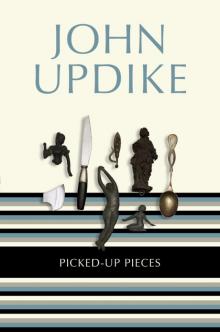 Picked-Up Pieces: Essays
Picked-Up Pieces: Essays Bech: A Book
Bech: A Book Roger's Version: A Novel
Roger's Version: A Novel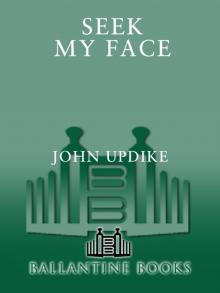 Seek My Face
Seek My Face The Carpentered Hen
The Carpentered Hen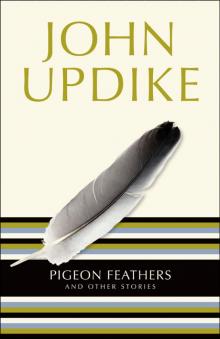 Pigeon Feathers: And Other Stories
Pigeon Feathers: And Other Stories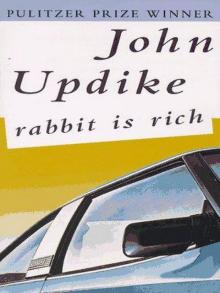 Rabbit Is Rich
Rabbit Is Rich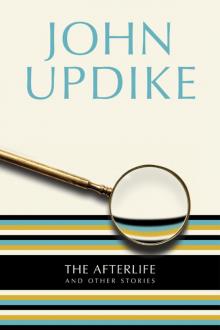 The Afterlife: And Other Stories
The Afterlife: And Other Stories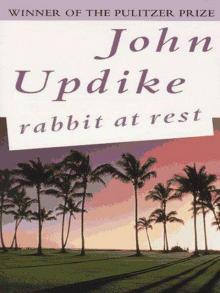 Rabbit at Rest
Rabbit at Rest The Witches of Eastwick
The Witches of Eastwick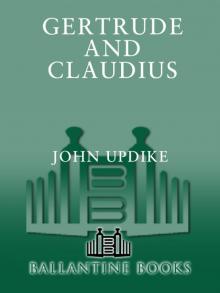 Gertrude and Claudius
Gertrude and Claudius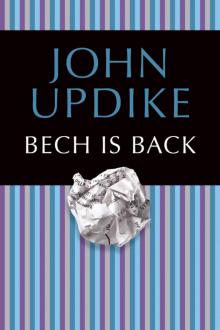 Bech Is Back
Bech Is Back Hub Fans Bid Kid Adieu: John Updike on Ted Williams
Hub Fans Bid Kid Adieu: John Updike on Ted Williams Marry Me: A Romance
Marry Me: A Romance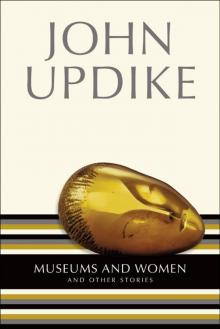 Museums and Women: And Other Stories
Museums and Women: And Other Stories My Father's Tears and Other Stories
My Father's Tears and Other Stories Collected Poems, 1953-1993
Collected Poems, 1953-1993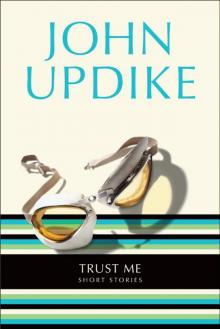 Trust Me: Short Stories
Trust Me: Short Stories Odd Jobs: Essays and Criticism
Odd Jobs: Essays and Criticism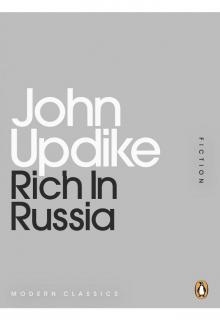 Rich in Russia
Rich in Russia Higher Gossip: Essays and Criticism
Higher Gossip: Essays and Criticism The Widows of Eastwick
The Widows of Eastwick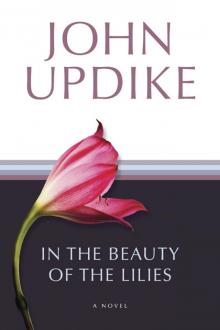 In the Beauty of the Lilies
In the Beauty of the Lilies Rabbit, Run
Rabbit, Run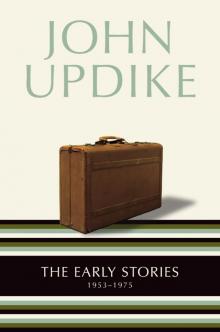 The Early Stories: 1953-1975
The Early Stories: 1953-1975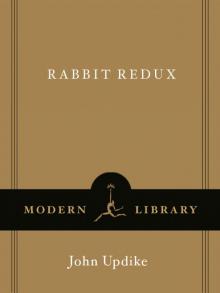 Rabbit Redux
Rabbit Redux S.
S.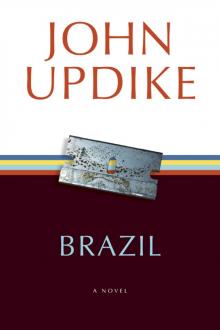 Brazil
Brazil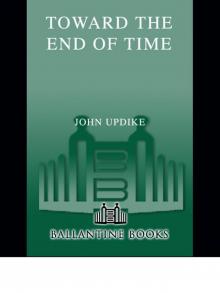 Toward the End of Time
Toward the End of Time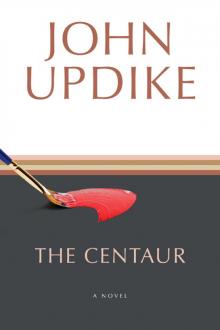 The Centaur: A Novel
The Centaur: A Novel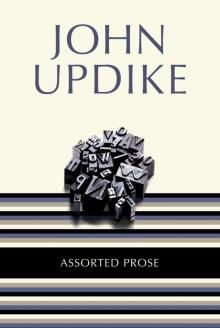 Assorted Prose
Assorted Prose Memories of the Ford Administration
Memories of the Ford Administration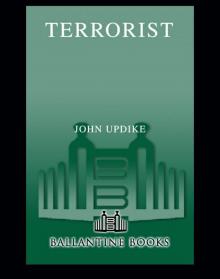 Terrorist
Terrorist Couples: A Novel
Couples: A Novel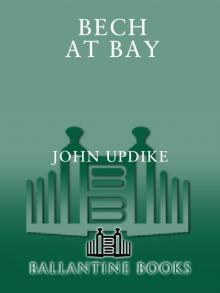 Bech at Bay
Bech at Bay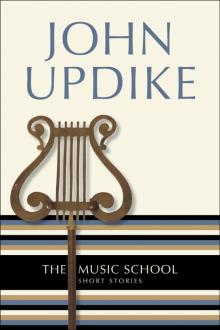 The Music School: Short Stories
The Music School: Short Stories Villages
Villages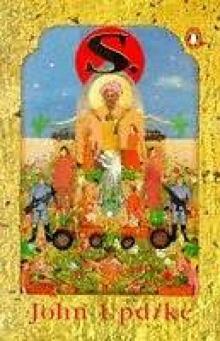 S
S Roger's Version
Roger's Version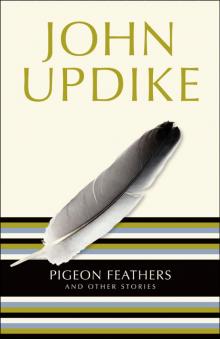 Pigeon Feathers
Pigeon Feathers Higher Gossip
Higher Gossip Rabbit Redux r-2
Rabbit Redux r-2 Memories of the Ford Administration: A Novel
Memories of the Ford Administration: A Novel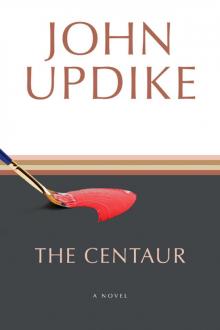 The Centaur
The Centaur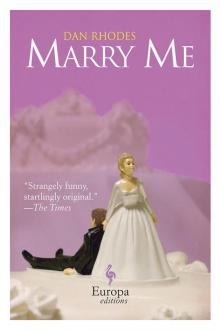 Marry Me
Marry Me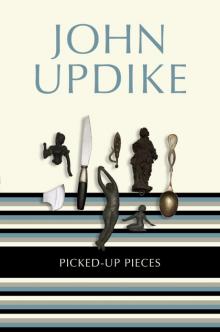 Picked-Up Pieces
Picked-Up Pieces Bech
Bech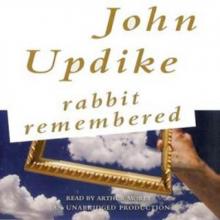 Rabbit Remembered
Rabbit Remembered Trust Me
Trust Me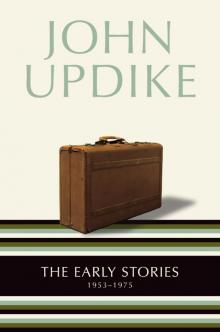 The Early Stories
The Early Stories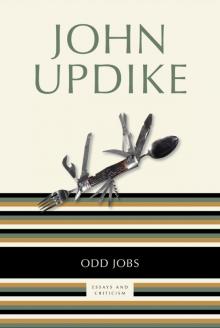 Odd Jobs
Odd Jobs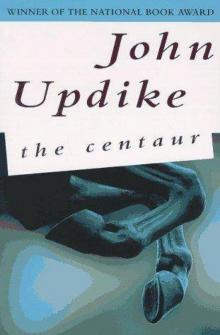 The Centaurus
The Centaurus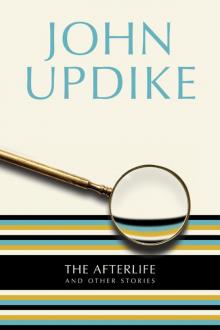 The Afterlife
The Afterlife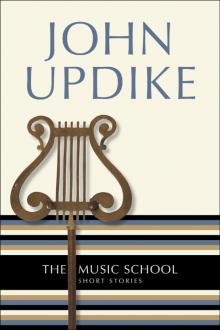 The Music School
The Music School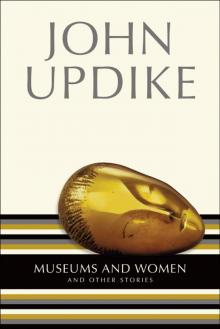 Museums and Women
Museums and Women Couples
Couples